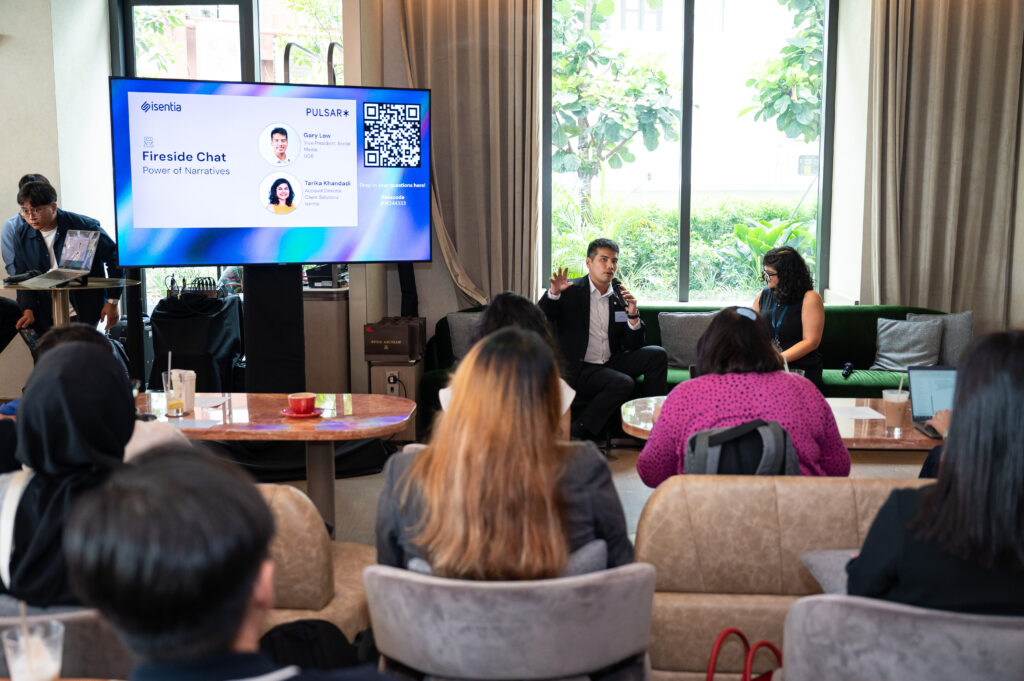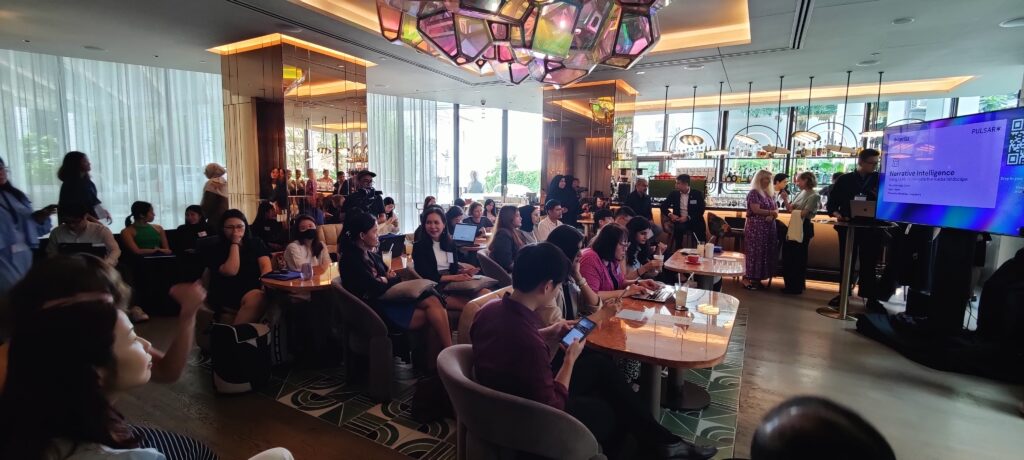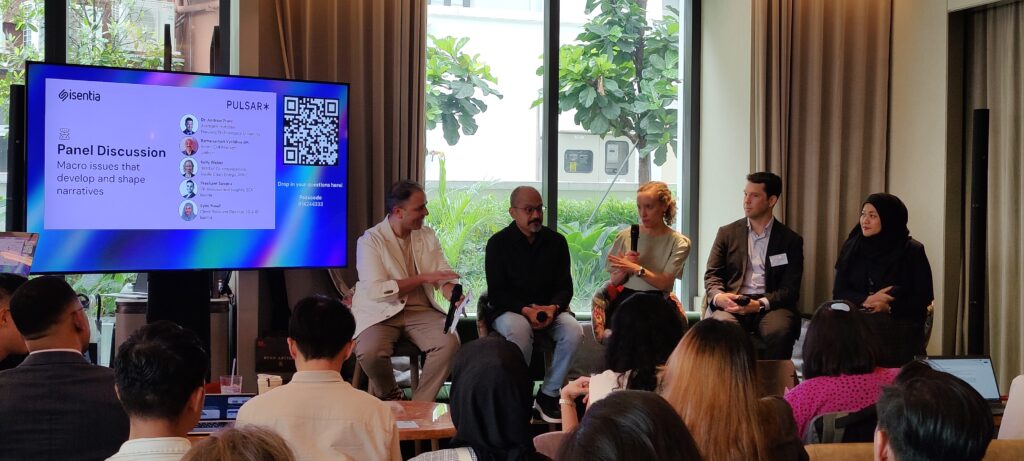Blog
The fundamentals of stakeholder strategy
A practical guide to tailored stakeholder management, offering strategies and tools to identify, map, and nurture relationships.
We hosted our very own event around narrative intelligence in Singapore, where we welcomed top minds from the PR & Comms, marketing and finance industries.
The agenda of the event was to understand how the media landscape is evolving with the sudden influx of different narratives – and how brands must navigate this very landscape. With the event, we took the opportunity to showcase our audience intelligence platform Pulsar, and how it can help users understand the communities, trends and (you guessed it) narratives that matter to them.


Joanna Arnold, Pulsar Group CEO, kicked off the event with a welcome address, and Prashant Saxena, VP of revenue and insights for SEA, took the audiences through a demonstration of our Narrative AI tool and how it enables users to see narratives building around a particular topic.

This was followed by a quick Fireside chat with UOB’s Gary Low who spoke about the power of understanding narratives in the banking sector with Tarika Khandadi, Account Director for Customer Experience for Singapore.
Our panel discussion, facilitated by Prashant Saxena and Client Solutions Director, Syaz Yusof, centred on how media intelligence and social listening have evolved in recent years, the strategies that brands can adopt to tackle misinformation, and controlling emerging narratives around crises.
Our expert speakers, Dr. Andrew Prahl from NTU, Kelly Weber from Aquila Clean APAC and Ramanathan Vythiligam from Unilever touched upon the importance of teaching LLMs in universities, how brands’ legal teams need to be involved in anything related to Gen AI and how it’s important that social media opinions don’t clutter the already cluttered social media space that help shape these narratives.
Finally, we presented a series of short insight case studies stitching together narratives that have emerged in finance with an exclusive peek into our Buy Now Pay Later report for the SEA region, topical social themes like ‘What is Iconic?’ with emphasis on the Singapore brand and media view around women in sport and gendered narratives.


This gave our audiences a glimpse of how our tool can capture the kind of audience & media narratives that have become essential for brands.
Isentia combines its deep regional expertise with Pulsar’s advanced audience analysis to help governments and businesses interpret narratives and craft effective communication strategies in today’s fast-paced world. It is therefore critical to understand these emerging themes, and brands must realise that we’re at a crucial junction where narratives merge with audience intelligence.
A practical guide to tailored stakeholder management, offering strategies and tools to identify, map, and nurture relationships.
Across the communications landscape, teams are being asked to do more with less, while staying aligned, responsive and compliant in the face of complex and often shifting stakeholder demands. In that environment, how we track, report and manage our relationships really matters. In too many organisations, relationship management is still built around tools designed for […]
Get in touch or request a demo.